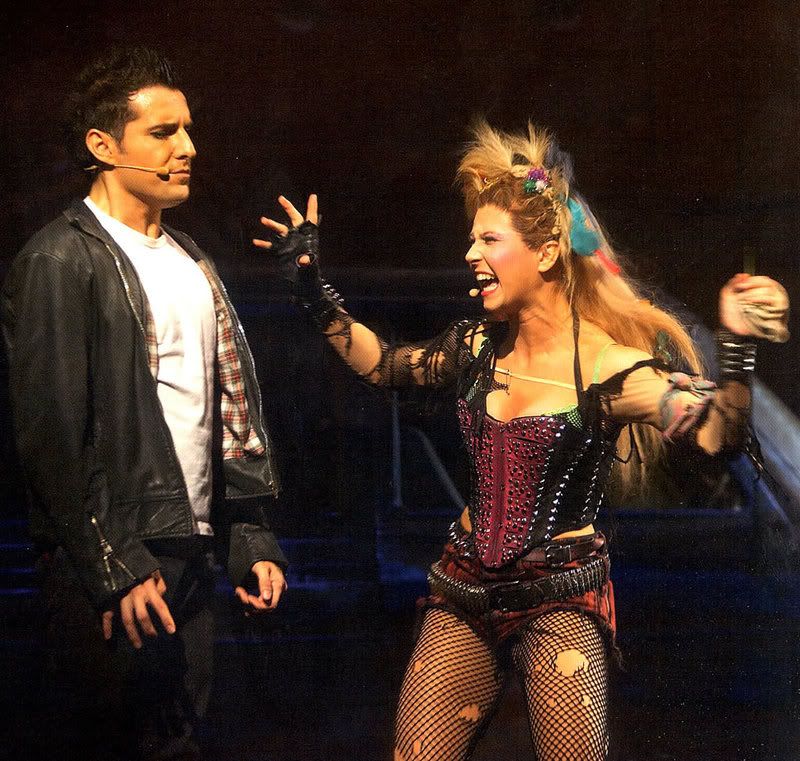tabkucap is from Macedonia, TFYR, has been a member for 11 years and last logged in 11 years ago.
|
Trade Policy:
Inflation remains subdued, which sounds like a good thing. But it is best in moderation, economic research suggests, and it insulates the economy from a bigger fear: deflation. MARSEILLE, France — This was supposed to be the year for Marseille. The gritty Mediterranean port, France’s second-largest city, was appointed the “cultural capital of Europe,†a rotating European Union honor. City fathers launched beautification projects, created new tourism attractions and invited people from around the world to visit. A splendid stone esplanade was laid around the Old Port, peppered with novel sculpture, and a high-tech historical museum went up next to City Hall. Read full article >>Want to spend the night in a recycled sea container? Or a boat balanced atop a London roof? Pop-up hotels are offering those options and more for travelers who act fast. • Cavendish wins sprint finish against Peter Sagan• Froome's lead cut by more than one minuteThe perils of being a race leader with a weakened team were glaringly exposed on the open roads leading here on Friday. After several stages in which they have not looked at their best, Team Sky were unable to prevent several of Chris Froome's closest rivals,  led by Alberto Contador, from gaining more than a minute on the race leader after what should have been a routine flat stage. The main beneficiary was a former Sky rider, Mark Cavendish, whose Omega Pharma – Quick-Step team ripped the race to shreds and were rewarded by their sprinter's second stage win of the race, the 25th of his career.The critical moment came 31km from the finish on a particularly exposed stretch of road, with the wind blowing from the left, as it had been for most of the stage. Froome and Contador were part of a reduced lead group and, as the road gradually rose, Contador's Saxo  Bank team-mate Daniele Bennati could be seen looking back down the line. What he saw was Froome leaving a gap in the line as he and the other members of Contador's team raised the pace; after a few seconds, the yellow jersey directory of ezines review to the left in the hope that someone else would take up the chase. At that key instant, none of Team Sky were able to close the few metres.Immediately Bennati, Nicolas Roche, Michael Rogers – coincidentally, Team Sky's road captain last year – Roman Kreuziger, Matteo Tosatto and Contador piled on the pressure, with Cavendish and two team-mates, the points leader Peter Sagan, the Belkin duo of Laurens Ten Dam and Bauke Mollema and the Danish climber Jakob Fuglsang sitting in their slipstream.Sky tried to chase but had neither the strength nor the numbers – with the lead group travelling at 55km per hour, they needed to be doing well over 60 – and one by one Kanstantsin Siutsou, Geraint Thomas and Ian Stannard succumbed.At the finish, Froome was completely alone in a group of 43; it was a stage when the loss of Edvald Boasson Hagen, who quit the race due to a broken shoulder, was sorely felt, so too the absence of Bernhard Eisel, who was not selected by Sky for the Tour.The eventual time loss of 1min 8sec was not catastrophic but as Froome said: "It was a reminder that this race is 100% open and that I need to be awake at all times." Following the loss of Boasson Hagen, Sky's head, Dave Brailsford, had said his team would need to be resourceful; Contador, however, looks to be the one who can improvise on the road.The finish sprint was not exactly a formality for Cavendish, as he had Sagan to contend with, but it was tactically perfect. His team-mate Niki Terpstra attacked at a kilometre to go, forcing Sagan's lone team-mate Maciej Bodnar to use his energy chasing him down, after which the Manxman's other team-mate Sylvain Chavanel manoeuvred the Slovak to the front of the string so that Cavendish could use his slipstream to take his  25th Tour de France stage win. He is now up to third in the all-time lists and his confidence has been restored.Cavendish and his Omega Pharma team-mates forced the initial split in the field, 113 kilometres Pregnancy Miracle finish, when they realised the wind might create chaos; after the initial split, the triple stage winner Marcel Kittel was left a little way behind, and they had a perfect opportunity to put him and his Argos-Shimano team-mates under pressure. That created a lead group of about 90, with Kittel and company chasing hard behind.Froome could count himself lucky not to share the fate of Alejandro Valverde, who started the stage second overall, but punctured as the battle between Omega Pharma and Argos reached its height. Five team-mates waited for him but they were unable to close a gap of 30sec,  and eventually waited for Kittel and company.Realising they had an opportunity to ride for second place behind Froome, Ten Dam and Mollema's Belkin team-mates piled on the pressure in their turn to keep Valverde at bay. The Spaniard's eventual time loss was almost 10min; his chances of winning the Tour had been eliminated completely by a single stroke of ill luck in a stage run off at an average of more than 47kph.It was a stage when racing instincts mattered as much as sheer strength and here, perhaps, Froome's relative inexperience played against him, along with Sky's lack of bodies to shield him."When an echelon forms it's like falling through ice, you've got five seconds or you are finished," said Cavendish, who was the last rider to get on to the back of the split behind Contador and his team-mates, and expended more energy doing so than he did in the finish sprint.Friday's roads were flat but in their way they were as demanding as any mountain stage.Tour de France 2013Mark CavendishChris FroomeTeam SkyTour de FranceCyclingWilliam Fotheringhamguardian.co.uk © 2013 Guardian News and Media Limited or its affiliated companies. All rights reserved. | Use of this content is subject to our Terms & Conditions | More Feeds Brace  yourselves for a shocker. Kids with special needs -- who struggle with medical, emotional or emotional issues -- tend to have more problems in school and are bullied more often than other kids. When Germany advanced to the  2010 tinnitus miracle semi-finals with four-goal wins over England and Argentina it became clear something special was brewing in German football. Leonard Cohen didn't release his debut single "Suzanne" until he was 33 He spent his time up until t[...] Last week, the United States topped Dell’s first-ever Global Entrepreneurship and Development  Index, a study of the best countries for female entrepreneurship. While this is a feather in America’s cap, women entrepreneurs across the nation still face many challenges. Sometimes, issues stem from women being kept from leadership roles; other times, it’s about female innovators failing to commercialize their inventions. These are some of the findings of Fiona Murray, the David Sarnoff Professor of Management of Technology at MIT and faculty director of the Martin Trust Center for MIT Entrepreneurship. MIT News recently spoke with Murray about her research and MIT’s role in supporting women entrepreneurs. Q. What has your research shown about female entrepreneurship in the United States? A. My research has … focused on the participation of women in what we call “innovation-driven entrepreneurshipâ€: the generation and commercialization of novel innovations. Although women seem to be as productive in science — and are increasingly choosing science and engineering education (especially at a place like MIT) — my own experiences, and those of my colleagues, suggests that they are not as active in the commercialization of their research: My results show women researchers trained between 1967 and 1995 patent at only 40 percent the rate of male faculty. This difference has declined in the past decade, particularly for women whose advisors are active in patenting and commercialization. In interviews, I found that these differences could be explained, in part, by the fact that women are less connected to industry and have narrower commercial networks. Moreover, they were more concerned about the potentially negative impact that patenting might have on education, collegiality and research quality.I’ve  also looked at another entrepreneurial role: sitting on scientific advisory boards. Women faculty are much less likely to be on these boards. When we look at women and men scientists with similarly high-profile natural vitiligo treatment women are not participating at the rates you would expect. My own interviews suggest that this is not because they are turning down opportunities, but because they are much less likely to be invited to join. This is a real challenge that we have to overcome; it’s as if women do not “look the part†of entrepreneurs or advisors. Women scientists and engineers comment that they ought to be more focused on “selling†their expertise and offering to be engaged in entrepreneurial activities. They see their male counterparts doing this and are learning from that. More recently, I have focused on the troubling question of why do few women-led, innovation-driven entrepreneurial businesses get venture capital (VC) funding. Less than 5 percent of VC dollars goes  to women-led companies. Part of the explanation — as documented by Ed Roberts [the David Sarnoff Professor of Management and Technology at MIT] — is that women tend to form startups alone and primarily in service businesses, which are two factors that probably mitigate VC funding. However, these are not the only factors: In my most recent work (not  yet published), we suggest that it might be a matter of investor perception and evaluation, because even when women are founding similar types of innovation-driven businesses, evaluators are less likely to show interest in their businesses. This suggests there is a lot more to be done. Q. What is MIT doing today to help promote female entrepreneurship? A. MIT has a number of important initiatives designed to provide the sort of systematic and disciplined approach to entrepreneurship that will allow our students to be extremely effective as they build and lead their startups. Although these activities are designed for male and female students, some of my own research shows that support from peers as well as more organized support and formal entrepreneurship activities are important for everyone, but particularly so for women. Another critical change in recent years has been the rise in female  role models around entrepreneurship at MIT. For my own part, when I took on my role  as vision without-glasses of the Trust Center, one of the key factors in my decision was to ensure that students saw women as part of our entrepreneurial activities on campus. We have since brought in a number of very talented and successful female entrepreneurs and investors as senior lecturers, including Katie Rae, managing director of TechStars; Jean Hammond, a Boston-based angel investor and serial entrepreneur; and Elaine Chen, an entrepreneur and vice president of product development at Rethink Robotics. Other schools have entrepreneurship education, but we have paid particular attention to a “disciplined entrepreneurship†approach, and a cumulative curriculum taught jointly by experienced (female and male) practitioners and faculty. More broadly, MIT was unique in its early attention to the role of women in science and engineering: Its 1999 Study on the Status of Women Faculty in Science at MIT (see PDF) was a benchmark in how to use hard numbers to measure and understand the differences in the ways male and female faculty were involved in the Institute. Since then, a lot has changed, and women  have a number of leadership roles at MIT. Examples include former MIT president Susan Hockfield, head of the Technology Licensing Office Lita Nelsen, and the vice president for research, Maria Zuber.  Q. What remains to be done to help support women entrepreneurs?A. At MIT, the most valuable things we can do are to continue to build up our support system for women entrepreneurs at every stage of their career: for undergraduates, midcareer students, postdocs and faculty. We already have programs that are the envy of the world, but there is more to do. For example, our Global Founders Skills Accelerator is extremely popular among student entrepreneurial teams, and gives male and female students a chance to really hone their skills and build their businesses in a safe  environment with mentoring and meeting milestones. Additionally, the Beehive Cooperative is a student-run space that helps incubate businesses. The more we can expand these initiatives while paying attention to including women mentors, role models and women students, the better. On the research side, forex growth bot to understand the dynamics that shape investor choices because, after all, without funding it’s hard to build a business. With all the funding choices that are emerging — Kickstarter, angel networks and government grants, as well as VC funds — there are lots of options. We need to understand  how different decision-making processes favor or disadvantage women entrepreneurs and what we can do to change those perceptions. It’s important that women, such as Nelsen and  Zuber, continue to play a leading role in research and commercialization. In the same way, faculty entrepreneurs, such as Angela Belcher [the W.M. Keck Professor of Energy] and Sangheeta Bhatia [the John and Dorothy Wilson Professor of Health Sciences and Technology and Electrical Engineering and Computer Science], also help promote entrepreneurship among women. The comments by a defense official were the harshest public comments so far from the Chinese government about Edward J. Snowden’s revelations. The trade in vintage Oscars through publicized auctions and an underground market has become a parallel universe as competitive and bitter as the annual acting derby itself. Lockheed Martin Corp. named new leaders for its aeronautics business and its F-35 fighter-jet program, the Pentagon’s costliest weapons system, as the company faces Defense Department pressure to cut the plane’s costs. Read full article >> High levels of deadly pollutants in Beijing and  other cities have led parents to alter their children’s day-to-day activities drastically, and some plan to leave the country. Jason Bonham’s Led Zeppelin Experience will tour with Heart this summer. British director Eran Creevy's step-up to a big commercial movie doesn't hit the same quality mark as his earlier drama ShiftyEran Creevy is the British director who made the very good urban drama Shifty in 2008, and this is his step up to a big commercial picture – a London crime thriller with plenty of hardware: handguns, machine-pistols, automatic rifles, the lot. James McAvoy is Max, a detective tortured by his demons. Some years before, he failed to nab top bad guy Jacob Sternwood (Mark Strong) and is still tortured by the pain of Shapeshifter-Yoga in the leg. Now he's got the chance to nail Sternwood, but is getting no real support from superior officers Bartnick (Daniel Mays) and Geiger (David Morrissey), and there's a conspiracy happening somewhere over his head. This is an ambitious picture that may have drawn some inspiration from the Hong Kong Infernal Affairs movies, and  I sense that it may well get box-office success. But it runs out of steam, with plot revelations visible from a mile away and a bit of a plausibility gap.Rating: 2/5ThrillerJames McAvoyAndrea RiseboroughPeter Bradshawguardian.co.uk © 2013 Guardian News and Media Limited or its affiliated companies. All rights reserved. | Use of this content is subject to our Terms & Conditions | More Feeds I visited 20 bars in four days in San Francisco. Here, a recipe for Vesuvio Cafe’s signature drink, the Bohemian Coffee. IN ASCENCION, MEXICO -- In this dusty farm town, an hour south of the U.S. border, more than 40 people were abducted - one a week - in the first nine months of the year. To get a clear picture of what’s happening inside a cell, scientists need to know the locations of thousands of proteins and other molecules. MIT chemists have now developed a technique that can tag all of the proteins in a particular region of a cell, allowing them to more accurately map those proteins.“That’s a holy grail for biology — to be able to get spatially and temporally resolved molecular maps of living cells,†says Alice Ting, the Ellen Swallow Richards Associate Professor of Chemistry at MIT. “We’re still really far from that goal, but the overarching motivation is to get closer to that goal.â€Ting’s new method, developed with researchers from the Broad Institute and Harvard Medical School, combines the strengths of two existing techniques  — microscopic imaging and mass spectrometry — to tag proteins in a specific cell location and generate a comprehensive list of all the proteins in that area. In a paper appearing in the Jan. 31 online edition of Science, Ting and colleagues used the new technique to identify i want my girlfriend back proteins located in the mitochondrial matrix — the innermost compartment of the cellular organelle where energy is generated. Lead authors of the Science paper are former MIT postdoc Hyun-Woo Rhee and Peng Zou, who received a PhD from MIT in 2012.Protein labelingUsing fluorescence or electron microscopy, scientists can determine protein locations with high resolution, but only a handful of a cell’s approximately 20,000 proteins can be imaged at once. “It’s a bandwidth problem,†Ting says. “You certainly couldn’t image all the proteins in the proteome at once in a single cell, because there’s no way to spectrally separate that many channels of information.â€With mass spectrometry, which uses ionization to detect the  mass and chemical structure of a compound, scientists can analyze a cell’s entire complement of proteins in a single experiment. However, the process requires dissolving the cell membrane to release a cell’s contents, which jumbles all of the proteins together. By purifying the mixture and extracting specific organelles, it is then possible to figure out which proteins were in those organelles, but the process is messy and often unreliable. The new MIT approach tags proteins within living cells before mass spectrometry is done, allowing spatial information to be captured before the cell is broken apart. This information is then reconstructed during analysis by noting which proteins carry the location tag.The new system makes use of a chemical tag that includes biotin, one of the B vitamins. To label proteins with biotin, the researchers first designed a new enzyme they dubbed APEX. This enzyme is a peroxidase, meaning that it removes an electron and a proton from its substrate in a reaction known as oxidation. Every peroxidase has different substrates, and one of APEX’s substrates is biotin-phenol.  When the researchers add biotin-phenol to a cell engineered to express APEX, the enzyme creates biotin-phenoxyl radicals — highly reactive molecules with unpaired electrons. These radicals quickly grab on to nearby proteins, tagging them with biotin.To make  sure the biotin is only labeling proteins in a specific part of the cell, the researchers engineer APEX so it is Fibroids-Miracle review a protein or peptide that they know is located in the area of interest. Once in the right spot, the APEX enzyme labels any other protein within a short distance of its original target.After the proteins are labeled, the process is very routine, Ting says. Cells are dissolved, biotin-tagged proteins are extracted, and the proteins are identified by mass spectrometry. “What you do is tag the proteins with biotin while the cell is still alive, and then you just pull out those proteins,†Ting says. “Therefore you bypass all of the problems that are associated with trying to purify regions of cells and organelles, because you don’t have to anymore.â€The new method is an “elegant and powerful approach†to defining  the protein populations of cellular organelles, says Xiaowei Zhuang, a professor of chemistry and chemical biology at Harvard University.“If we take the analogy that an organelle is like a machine, what the method can offer us is the complete parts list of the machine, and where the parts are. Such knowledge goes a long way in helping us understand how the machine works. It is truly an important and potentially transformative technology development,†says Zhuang, who was not part of the research team.A comprehensive listTo demonstrate the technique’s power, the researchers created a comprehensive list of the proteins found  in the mitochondrial matrix. Most of a cell’s energy generation takes place in mitochondria, as well as many biosynthetic processes. Using the new method, the team identified nearly 500 proteins in the mitochondrial matrix. Previous attempts to map the matrix proteome by extracting that cellular compartment and then performing mass spectrometry yielded a list of only 37 proteins. “There was no previous high-quality map of the matrix subdomain of mitochondria, and now we have  one,†Ting says, adding that this new wealth of information should help biologists to learn more about the functions of many of those proteins.Already, the team has found that an enzyme called PPOX — involved in synthesizing heme, the iron-porphyrin complex found in hemoglobin — is not located where biologists had thought trademiner As heme precursors move through the biosynthetic pathway, they are shuttled to different parts of the cell. Finding that PPOX is in the matrix means that there must be unknown transporter proteins bringing heme  precursors into the matrix, Ting says.“Just relocalizing things causes people to have to rethink these biosynthetic pathways and how intermediates are moved around,†she says. “The molecular understanding of  that pathway has to be rewritten now, based on our data.â€The researchers are now investigating proteins found in another compartment of the mitochondria, the intermembrane space. They are also modifying the chemistry of the labeling system so they can use it for other tasks, such as mapping the topology of membrane proteins and detecting specific protein-protein interactions.The research was funded by the National Institutes of Health, the Dreyfus Foundation, the American Chemical Society and the Broad Institute. The author extols the virtues of  an eggplant, a versatile fruit. The measure puts an end to most cases of so-called libel tourism, in which powerful  foreigners have brought cases against authors, journalists and others. Hollywood executives keep insisting that Americans want to watch only computer animation. But the likely candidates for the Oscar for best animated feature defy this assumption. When he was working in the intelligence community in 2009, Edward Snowden, the National Security  Agency contractor who passed top-secret documents to journalists, appears to have had nothing but disdain for those who leaked classified information, the newspapers that printed their revelations, and his current ally, the anti-secrecy group WikiLeaks, according to newly disclosed chat logs.  Read full article >> The new standard, which comes nearly two years after a public outcry, is equal to the level that the Environmental Protection Agency has set in drinking water. The interaction of African Americans with American presidents and the first family  is explored in two books, "The Black History of the White House" by Clarence Lusane and "Family of Freedom" by Kenneth T. Walsh. With the year's string of weighty contenders at the Golden Globes, the industry seems to be suffering from a persistent bout of heavy |
Contact:
You have to be logged in to contact this member. |
 tabkucap's Latest Sheets Feed
tabkucap's Latest Sheets Feed tabkucap's Latest Requests Feed
tabkucap's Latest Requests Feed


Latest Sheets (0)
Member has not submitted any sheets yet.
Latest Requests (0)
Member has not requested any sheets yet.
Latest Friends (0)
Member has not added anyone as friend yet.